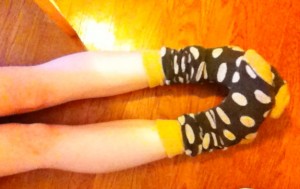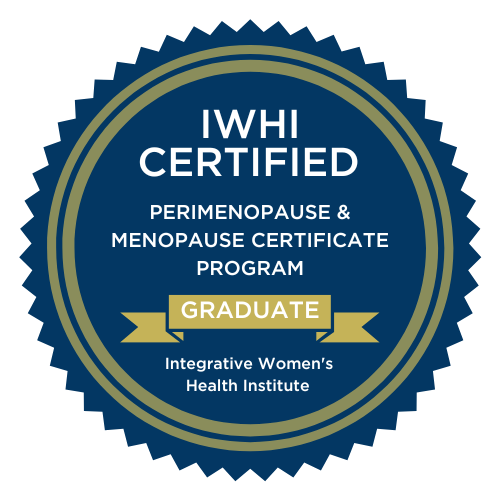It’s not uncommon to have an emotional release during or after an abdominal massage. Our structural alignment is affected by our emotional state and vice versa. So, when we start working on our physical alignment we may experience changes on an emotional level as well. Our psoai (or psoas if you prefer) can hold the fear response. These deep muscles aid us in escaping danger or curl us into a ball to protect our internal organs. That’s why bullying the psoai into lengthening through intense stretching or with deep “search and destroy” type massage can be emotionally and physically upsetting.
My psoai story When I was seven years old my older brother and I shared a bunk bed. I was supposed to sleep on the bottom bunk and Jimmy shared the top bunk with his skateboard. One night we switched beds and I slept on the top bunk, rolled off and crashed to the floor in the middle of the night. I was in excruciating pain and couldn’t stand up. I managed to wake Jimmy with my screaming. Knowing we would get in trouble for switching beds, he climbed over me and up to his bunk and pretended like nothing happened and I managed to crawl into the lower bed. As I lay there in pain waiting for the impending dawn, I made up a story of why I suddenly lost my ability to walk. “Yeah, yeah, I’ll say I tripped on Jimmy’s BB gun (the one he so carelessly left on the floor) and now it’s his fault I’m paralyzed (I wasn’t paralyzed, just dramatic).” I thought about how Jimmy would get into trouble and I would get a bunch of sympathy and attention. I dreamt of sitting propped up by fluffy pillows, eating ice cream and receiving visitors who would ask how I was doing with soft drawn-out voices, pained expressions and tears welling up in their eyes.
My fantasy of being showered with loving attention came to a crashing halt in the morning when my mom accused me of faking and told me to “get my ass out of bed” and stop crying or she would “give me something to cry about” (her favorite phrase). I finally fessed up and told her the truth. I know she felt bad for not believing I couldn’t walk and I also knew I could use this to my advantage. I could get mileage out of this one for sure! “…remember the time I almost died and you yelled at me?”
At the hospital, my parents left me alone with the X-ray technician. I’ll call him Jerk. Jerk said that I couldn’t wear my underpants during the X-rays and “no, my mom can’t be in the room with me.” He firmly positioned my legs on the cold metal table in preparation for the X-rays. I was exposed and vulnerable. My body reacted by closing my legs together and rotating my leg internally, to hide my “private parts”. I don’t think it was a conscious movement and I’m sure it was part of a whole-body nervous system reaction, not just my internal rotators. That movement was just the beginning of a larger protective movement halted in mid-motion. It wasn’t safe to flee or curl up in the fetal position. I wasn’t able to act on my body’s urge to flee, so I (my tissues) absorbed that moment. I remember telling Jerk (and firmly believing myself) that I wasn’t moving! Jerk, however, thought otherwise and was growing increasingly frustrated with me, he repeatedly picked up my leg and aggressively rotated it out and down again and again….and again. By the way, my pelvis was fractured so every movement was excruciating. I just wanted it to be over. Boy, was I pissed! I didn’t act out or verbally express my anger, how could I? I was seven and Jerk was probably four times my age and size. I was angry at Jerk and angry at my mom for not protecting me. I know now that it wasn’t her fault, she would have been in the room if Jerk allowed her to be. I was a cauldron of repressed anger, fear, and shame. My body still remembers that incident, the fall, the x-rays, fear, vulnerability, and being alone. My right leg still turns in at times, but every time I make progress in my alignment I become a little freer from those old emotions. It’s a process, not to be rushed.

I always look at my client’s leg position at the beginning and end of sessions. Often times they start out with internally rotated femurs or crossed ankles. This may be a sign that their holding pattern is emotionally charged.
Treating your psoas with TLC Years ago an overzealous massage therapist put her elbow in my belly trying to force my psoa to release. In response, my muscles tried to push her out. She laughed lightly as if I were being silly and told me to breathe through it. I spoke up for myself and said, “no, that’s not okay and by the way, get your frickin’ elbow off my ovary!” (The ovaries lie directly over the psoai.) My psoai have taught me how to respect my boundaries with my voice so that my body doesn’t have to recoil in fear. When I approach my psoai with TLC, the TLC I needed when I was seven years old, my psoai (I) can let go. I am my psoai, my psoai am I.
Test your psoai length: Lie flat on the floor.

Do you have to arch the back to get your hamstrings down? If so, your psoai are shortened.

When your ribs are down on the floor do your hamstrings come up? If so, your psoas or illiacus are shortened.
To release the psoas (see image below): Place a Yoga Bolster (Amazon Link) under your shoulder blades (no lower than the shoulder blades). If your hamstrings still don’t touch the floor, stack wool blankets on top of the bolster until your upper body is elevated enough for your hamstrings to rest flat on the floor. Prop your head up with a towel so your neck isn’t in extension. Then do nothing. This is a release, not a stretch. Rest until you feel your ribs relax toward the floor. It may take 5-20 minutes or more. You should do this in a calming environment, so Do NOT watch Bruce Willis movies during the psoas release. Do NOT do the psoas release with toddlers, puppies or baby goats in the room. Do not drink coffee before attempting to release your psoas. Once you have released your psoas rest flat on the floor for a few minutes. Notice the difference? Are your ribs and hamstrings down?

Psoas Release. Spock haircut not required.
Psoas Release. Use something to prop your head up to avoid neck extension.
Sitting for long periods of time, aggressive abdominal massage, rib thrusting, a posteriorly tilted pelvis, positive heeled shoes, and caffeine all negatively affect the psoai, so be kind to yourself and make changes where needed. Do your restorative exercises or other alignment work with compassion for yourself. Learn self abdominal massage and do your Radical Acceptance (Amazon Link) practice, explore, express and heal. I cover ways to work with the trapped emotional energy held in the belly and abdominal massage in both my online abdominal courses.








Congrats for finding your voice, and knowing your boundaries. Very powerful! Susan
Barbara, that was very moving. Thank you.
beautifully written; thank you!!!
Thanks for great article. When I do this (I have neck problems) it sort of uncomfortably squashes the base of my neck which then makes my head roll backward. If I put an extra pillow just under my head to prop it up higher will I still get the psoas release benefits from the posture? Thanks!
Hi Lulu, yes, you still get the benefits. I too prop my head up so that my neck isn’t in extension. Thanks for bringing that up!
Thanks for your reply alignment monkey! 😉 How long would you normally lie like this to help it release?
Until your ribcage drops toward the floor. It may take 5 to 20 minutes, it depends on you and your body. Listen to your body. After you have felt a release, lie flat on the floor for a few minutes.
Thank you 🙂
What a great story. Thanks so much for sharing it. Blessings to you.
I’d really like to see a side view of you once your psoai have released to see how much change one can expect. I definitely have sensation in what I assume is the psoai….
Good idea Dee. I’ll work on that and add it to the post. What you are looking for is your ribcage to be flat on the floor (without the bolster). And a neutral pelvis (ASIS and Pubic level) and in a level plane with the lower ribs.
Hello! When doing this release should
The feet flop out to the side? (Mine do!)
Thanks 🙂
Yes, the femurs may rotate out during the release, bringing the feet with them. Or sometimes it may just be coming from the feet. In that case, perhaps the ankles and feet are where you hold stress and the feet flopping out is a sign the you are letting go and relaxing. Good job!
One more question…if you don’t mind! ;-). I have read some of your stuff about the psoas being close to the ovaries etc. Is it ok to still do this while on your period too? Thanks
Yes, it’s fine to do this psoas release while on your period. The only exercises I don’t do during my period are inversions.
Is it too much to do this 3 times a day? I think my psoas is extremely tight.
No, go for it. Also, look at your habits to make sure you’re not undoing all your releasing work. Your muscles will remember what ever posture you held it in the longest. Your habits become your posture. Minimize time spent in hip flexion. Sitting in a chair the bulk of the day can shorten your psoas by up to 3 inches.
Thanks Barbara. When you are lying like this where should the bony back part of your pelvis be? Not sure if its my body or the way I got myself on the bolster but mine is suspended in the air?
Keep the bolster under the shoulder girdle. The sacrum should not be suspended in the air. Your ASIS and Pubic bone should be in the same plane. Perhaps your bolster is too high?
Thank you so much for this article. I have now started doing this release regularly and it is making a noticeable difference to both my physical and emotional life.
I particularly appreciated your comments about emotional release: when I first tried to do this got very uncomfortable. I then realised I wasn’t PHYSICALLY uncomfortable – in fact, my body was very happy! It was emotional discomfort that was making me want to get up and run away (yes, that was my inner response). I forced myself to stay put and breathe through and now I don’t have this reaction 🙂
So, THANK YOU!!!
Thank you for sharing your experience Jude. Best to you!
Hugs to the 7 year old you!
Thank you for sharing your experience.
About a year ago I fell at work flat on my back on a concrete floor (I also have 8 titanium rods in my back from a previous back surgery, in which my lowest disc in my spine was removed and fused–Tractor trailer hit me at 55mph at a stop light;)! 3 Months following my fall at work, I fell down 3 wooden steps on my right sacroiliac area, where I had a bruise for about a month!! Ever since my falls I have had tremendous amounts of pain in my (Most troublesome muscles mentioned by chiropractor):Psoas, ITB band, Sacroilliac Joint, and Sacrum misalignment!! I have pain every day in the pelvic area (Sacroilliac, etc) and Neck area(Lats, scapula)!! It is very difficult for me to walk with a proper posture and alignment that doesn’t cause me pain, sitting can also be troublesome if I try to sit “upright” !! My muscles are usually tense and weak from lack of exercise due to chronic pain!! I have been going to a chiropractor for about a year and I just finished 20 visits of Acupunture with modest improvement!! Any advice, tips, or knowledge that you can bestow upon me will be greatly appreciated 😉
Unfortunately I can’t give medical advice, the human body is too complex to evaluate and assign advice through a blog. Perhaps it’s best to see a Physical Therapist in person. Sorry I couldn’t be of more help.
My feet flop to the side outwards automatically from the start but my body still fails the psoai test. Could this mean that the psoai are okay but something else is causing the ribs and hamstrings to fail the test?
Hi Amy, Sorry if my explanation wasn’t clear. It’s ok for the legs to flop to the sides while in the psoas release. Internally rotated isn’t an evaluation tool for psoas tension.For me, the internally rotated femur was a protective mechanism that was halted. The psoas release in this article focuses on the upper psoas tension that causes the rib shear. I would try the psoas release then retest to see if there is a difference in the ribs relative to the floor. Several things come into play (no one muscle works in isolation), but the psoas is the main contributor to ribcage shear.
This was well worth the read. The emotional component was/is huge. I am glad you could share it. I hear your continued victory. Thank you.
And I will think of letting my own psoas uncoil emotionally and be grateful for its protective shut the door ways:)
Side note, I wanted to karate chop Jerk in the groin on your behalf.
Hi Barbara for sharing this is very helpful information.you are working the law of giving and receiving.it’s not always about money.Thank you so much for all that you and all that you SHARE
Hi there, love this article… my body is so pleased that l’m learning how to work with her now instead of tensing up and resisting her efforts to protect me.😊 l’m wanting to clarify what ribcage shear is …. is it when your lower ribcage permanently sticks out? I’m also wondering if having scar tissue and adhesions attached to the psoas on one side ( in my case from severe endometriosis) could also shorten it and then contribute to pulling the pelvis out of alignment ?
Think of your ribcage as a bell, when rung, the lower part rotates forward and up while the upper part rotates back. It’s usually not permanent, it’s something we do when told to “stand up straight” and then it becomes a habit which eventually change the tissues. “Standing up straight” in this way is smoke and mirrors though, it doesn’t correct the hyperkyphosis (that make us look slumpy) it just displaces it and compresses the vertebrae.
A permanent lower rib cage sticking out is what I call rib flare, where just the lower front of the ribs flare. I wrote about it here: https://alignmentmonkey.nurturance.net/2015/rib-flare/
I don’t know how common endo on the psoas is but I know that it has happened, as reported in this case study: http://www.ijcem.com/files/ijcem0030435.pdf
I think that’s “Mr.” Spock, not the good doctor 🙂
Great article.
Thanks for the clarification! My mind is blown. I always thought he was a DR. 🙂
Thank you for this! And for your story…
When I tried this I felt tension all the way down my legs melting. When I stood up and started walking I noticed my glutes were firing more and super engaged with each step. I wonder if that is correlated with this Psoas release???